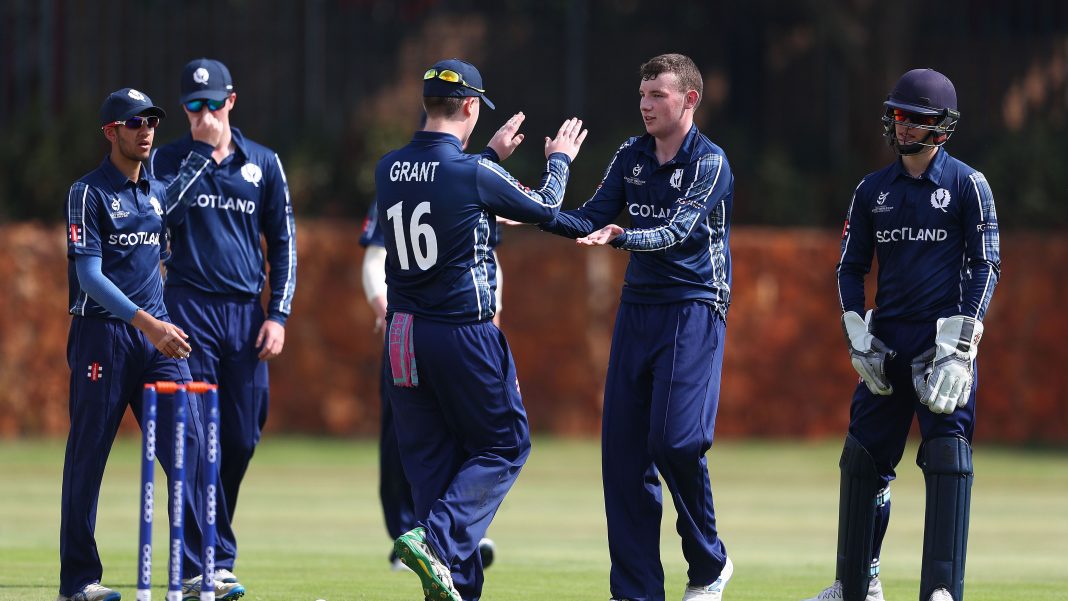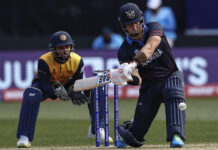
On 20 July 2003 a youngster named Paul Stirling made 65 not out as Ireland beat the Netherlands by seven wickets in Copenhagen.
Also playing in that game were Andrew Balbirnie, now Stirling’s Ireland captain and his partner in a match-winning second-wicket stand of 214 in a Super League match against England this summer, and future Dutch internationals Alexei Kervezee and Tim Gruijters.
Pretty remarkable, you might think, but the most remarkable fact is that that encounter could not now happen, because the match was part of the ICC European Under-13 championship, a competition which the ICC discontinued in 2008.
In that 2003 summer there were age-group championships at Under-15, Under-17 and Under-19 levels as well. Those involved included a couple of Scottish kids named Calum MacLeod and Alistair Evans (Under-15s), Ireland’s Gary Wilson and the Netherlands’ Pieter Seelaar and Tom Heggelman (Under-17s), and a quartet of promising youngsters named Boyd Rankin, William Porterfield, Kevin O’Brien – and Eoin Morgan at Under-19s level.
Between 2000 and 2012 there were even intermittent Division 2 tournaments at all four levels, with some 15 countries fielding youth teams in one or more age-groups, and six – Belgium, France, Germany, Gibraltar, Israel and Italy – participating at least once in all four.
Of these, only the Under-19 tournaments survive in Europe (although they are often played at Under-18 level these days), because they are part of the pathway to the Under-19 World Cup.
The rest were progressively phased out: the Under-13s were the first to go, followed by the Under-17s in 2012 and the Under-15s in 2015.
There was a similar scaling-down of youth competitions elsewhere, although they have not been disappeared as radically as in Europe and Africa; the Asian Cricket Council runs regional under-16 tournaments in both East and West, each involving eight countries, while there are, to the enormous credit of the countries involved, regular South American championships at Under-13 and Under-17 level, in which Argentina, Brazil, Chile and Peru all take part.
They clearly understand, not only that young cricketers don’t grow on trees, but that giving youngsters the opportunity to represent their country provides a vital incentive to hard work, as well as creating role models whom others may wish to emulate.
The truth is that even where it is possible to run domestic youth competitions, the level is seldom high enough to provide a challenge to the more talented, and games often have to be played under modified rules to maintain interest and ensure that every one gets a chance to bat and bowl.
A country like the Netherlands, with around 1000 junior players, is able to run both outdoor and indoor competitions, but the demands of wider participation limit the opportunities for the most talented to excel, and even there the Under-19 league perished some years ago and the Under-17 competition runs to just seven teams, two of them combined elevens from two clubs.

The KNCB has active programmes of national squads for both boys and girls, who take part in tournaments in England every summer, but how much better would it be if they were able to compete against their peers in other European countries?
And if the opportunities are limited for the Dutch, in many respects the best-established cricket-playing country on the European continent, how much more difficult is it for youngsters in environments where the game is chronically underfunded, struggling to develop, and virtually unknown to the local population?
Everyone agrees, at least in principle, that the key to building a sustainable cricket culture in the game’s frontier lands is successful promotion among local communities while maintaining, and indeed strengthening, its base among the locally-born children of expatriates whose enthusiasm for the sport is part of their birthright.
We also have to recognise that this is no easy task, and that every possible assistance and support is needed if those promoting the game in, say, Russia, Bulgaria or the Czech Republic, or in the Gambia, Mali or Lesotho, are to have any realistic chance of achieving it.
Running a range of international youth tournaments, perhaps on a regional basis, is surely one way in which promotional efforts in emerging cricket countries could be most effectively supported.
It would offer at least a triple whammy of benefits: it would establish a developmental pathway for the most talented young players; it would provide a focus of ambition for them and those who aspired to join them; and it would create publicity for the game in the host countries, and potentially in those of the winners as well.
And if the use of live streaming pioneered so successfully this summer by the European Cricket Network were to be applied to such tournaments, the opportunities for promotion for youth cricket could be expanded exponentially.
Imagine a Baltic U-16 championship involving Russia, Estonia, Finland, Sweden and Denmark, or a Mediterranean one with Spain, Gibraltar, France, Italy and Malta, or a Balkan one with Slovenia, Croatia, Serbia, Greece, Romania and Bulgaria. Or for that matter, a Mitropa Cup with Germany, Austria, the Czech Republic and Hungary.
Such events cost money, of course, and many of the countries I have named are nowhere near being in a position to field a team in any specific age-group.
But it’s a direction in which we should be heading, and if the South American quartet can find the resources to make such things possible, why shouldn’t others elsewhere on the globe be equally committed to giving their youngsters a place on the international stage?
And why shouldn’t the ICC, globally and through its regional offices, be doing everything in its power to make such grassroots developments happen?
Who are the players to watch in the Emerging Game under 21? Check out our series here.
You’re reading Emerging Cricket — brought to you by a passionate group of volunteers with a vision for cricket to be a truly global sport, and a mission to inspire passion to grow the game.
Be sure to check out our homepage for all the latest news, please subscribe for regular updates, and follow EC on Twitter, Facebook, LinkedIn and YouTube.
Don’t know where to start? Check out our features list, country profiles, and subscribe to our podcast.
Support us from US$2 a month — and get exclusive benefits, by becoming an EC Patron.






